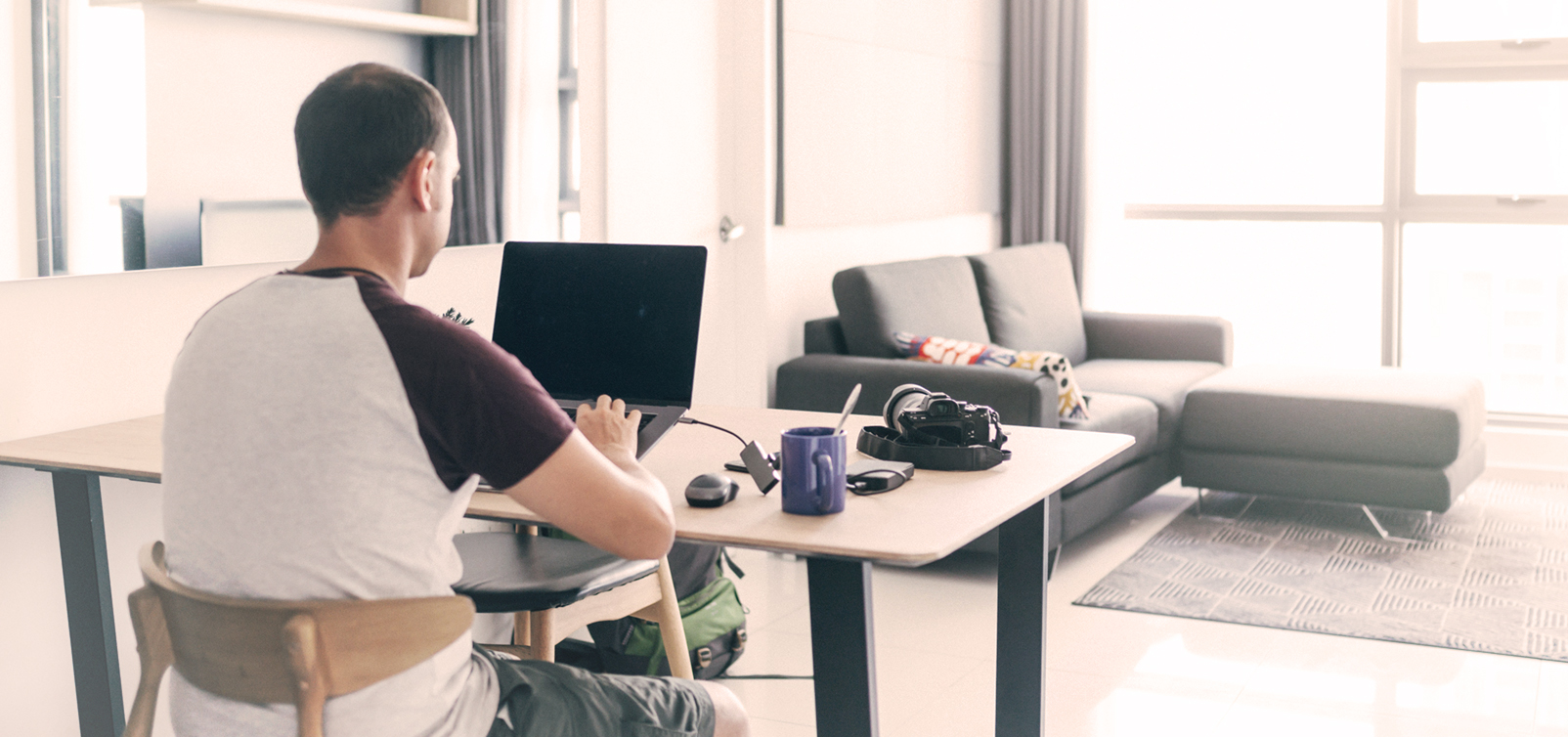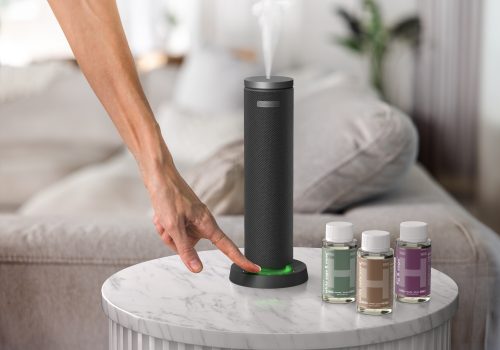The Best Home Office Setup for Productivity
Remote work has become a necessity for many more people than in the past, but it’s also become a popular choice for a growing number of workers around the world. Working from home often gives you more flexibility, better comfort, and more options for your work setup.
But with all that freedom come many choices to make about your workstation.
Here are some important tips to consider to help you find the best home office setup that boosts your productivity and stokes your creativity.
Creating a Comfortable and Productive Home Office for Remote Work
Potentially, it can also give you a higher level of productivity when you’re not distracted by as many in-person meetings, coworkers, and other office goings-on.
But working from home can also have its fair share of distractions, from family members and pets to chores, neighbors, and that feeling of being just a little too close to your cozy bed to focus on the task at hand.
Here are some tips to create an ergonomic desk setup and your most productive home workstation.
1. Find a Dedicated Working Space
Some work is well-suited to an environment where other people are around to bounce ideas off of and make general conversation. Other types of work require privacy, quiet, and long periods of solitary focus.
A dedicated working space doesn’t have to be a private room where you don’t see other humans.
What’s important is that you’re separating your work life from your personal life, even though it’s all blended together in your home. As luxurious as it might sound to say you work from your bed in your pajamas, that’s neither ergonomic nor, for most people, conducive to productivity.
Working from a kitchen table or on the living room couch might be effective as a temporary solution. But when you’re setting up a long-term home office, you should create a dedicated working space.
If you don’t have separate space available, you can still try to set up a dedicated workstation—a table or desk that’s only for work.
A productive and ergonomic home office setup involves some things besides your computer and a coffee mug, so having a place where you can place your work materials without moving them creates less friction when it’s time to transition from “being at home” to “going to work.”
2. Find the Proper Monitor Height for Your Neck and Eyes
Whether you’re a career remote worker or you’re adjusting to a new change of environment, your main piece of home office equipment is probably your computer. For many people, that’s a laptop. And while screens are brighter and clearer than ever, they’re still usually stuck on the table, 10 to 15 inches high—not an ergonomic position.
When your laptop is on the desk and you’re sitting up straight, you’ll have to look down at the screen, bending your neck and, almost inevitably, hunching your back and shoulders. A few hours of this puts unnecessary stress on your neck, shoulder, and back muscles, potentially leading to soreness and stiffness. This is not good sitting posture.
A desktop computer is slightly better, especially if your device has a height-adjustable stand. But even then, it might not be high enough.
Your monitor should be high enough that the top of the screen is about at eye level when you’re sitting with good posture.
If you can’t achieve the proper height with the built-in stand, invest in a separate stand or mount to adjust the height of your monitor more easily. Alternatively, stack a sturdy pile of books beneath it to raise it higher.
Other Computer Accessories
With your computer on a stand, you’ll need a separate keyboard and mouse to place on the desktop. If you’re using a laptop, that probably means buying third-party accessories.
Look for a mouse that’s comfortable in your hand and a full-sized keyboard that you can type on with good wrist posture. And, of course, choose designs that will bring you joy every day.
3. Get the Right Desk
If you have room for it, a dedicated desk will make all the difference in your home office. It becomes a space where you can work on and organize projects without the rest of your life disrupting them.
A good desk will have ample space to hold your computer, keyboard, and mouse, as well as additional materials you’ll use for work, a drink, pens, paper, and whatever else you use daily. Crucially, it should be able to hold all these things without being cluttered.
To work productively, it’s best to have everything you need within arm’s reach and easily accessible, with no rummaging around for a missing note or printed document.
Sitting vs. Standing
For some people, a standing desk helps them avoid joint and muscle stiffness after sitting for long periods. But it’s simply not feasible to stand still for many hours a day as you work at a standing desk.
That’s why many popular desks are height-adjustable, so you can raise them up to standing height for short periods and then lower them back to a sitting position.
4. Sit in an Ergonomic Office Chair
A good ergonomic office chair will help you feel comfortable and sit with good posture at your desk.
Some qualities of an ergonomic office chair:
- Height-adjustable so you can sit with your arms and hips parallel and your feet flat on the floor
- Lumbar support to relieve lower back tension
Ergonomic Office Chair Accessories
To help you sit comfortably while maintaining good sitting posture, use a posture seat cushion on your desk chair. A gel seat cushion provides contoured support for added comfort.
You can also strap a massaging pad to your chair to help relieve tension that can build up from sitting all day while you work. A massaging seat cushion or back pad applies gentle pressure to your muscles, which can help you feel relaxed and comfortable while sitting.
5. Use Good Lighting
Ambient light has a real, physical effect on our energy levels and awareness. The part of the brain that controls your body’s biological clock receives signals directly from your retina about the light in the environment. Your sleep-wake cycle is naturally trained on the daily cycle of light and dark.1
Therefore, having good light in your home office sends signals to your brain that it’s a time for activity and wakefulness.
Daylight exposure can also promote physical activity and longer sleep duration, according to a 2014 study.
6. Keep the Air Fresh
Stale, stagnant air isn’t conducive to a comfortable, productive environment. One of the keys to being productive is feeling happy to be working in a clean, fresh space. Plus, unpleasant smells can be distracting from your work.
Opening a window occasionally, using a fan, and spraying your office chair with a fabric freshener can help refresh the air in your workspace.
In addition to cleaning, essential oils and candles can help keep the air in your space smelling fresh.
7. Upgrade to Fast Internet Service
Working from home means depending on a stable internet connection to communicate with colleagues and get things done. Internet speeds vary widely across different regions, and, in some places, a fast internet connection might be expensive.
But upgrading to the fastest internet speeds you can afford might be a major way to upgrade your productivity, too.
If your daily tasks involve uploading and downloading large files or lots of videoconferencing, a fast internet connection could make all those tasks a little less painful and a little more efficient.
If paying more for faster internet speeds saves you time and stress, it might just be worth it.
8. Control the Wires
Cable management is one of the least desirable parts of setting up and maintaining a clean, productive home office. Between computers, monitors, modems, printers, and other devices, decluttering cables can be a real pain.
But you can use clips, straps, and simple ties to keep cables organized and hidden out of sight where they won’t distract you or become unplugged accidentally.
9. Prioritize Privacy in Your Setup
When it comes to working from home—especially when you’re not the only person living there—a little privacy goes a long way.
However, many people don’t have the space for a full, private office in their homes.
Turning your desk toward a wall or window instead of toward the open parts of the room may help you ignore any activity that’s happening around you.
If you can’t find a space alone, try to schedule alone time (or, at least, quiet time) with the people you share the space with. Block out some time on your calendar when you’re turning on “Do Not Disturb” and you’d like to be left alone.
Something as simple as a sign on the wall that tells others that you’re currently focusing and would like not to be disturbed can help, even if you’re not behind a closed door.
Try a Sound Machine
You can emulate some amount of privacy by using noise-cancelling headphones to block external sounds. You can even wear earplugs for the periods when you’re most intensely focusing on a task.
Or try using a sound machine to help avoid distractions around you. White noise (and other ambient sounds) can help drown out distracting noises around you.
10. Think Vertical for More Space
Keeping a clean, clutter-free desk can be difficult, especially when you’re busy and don’t feel like you have time to organize.
But your desk space, while limited, is valuable, and you should try to save it for things you’re working on right now (not this week or this month).
To solve the problem of storage, think vertically. Add shelving to the walls above and around your desk and use that space to store supplies and materials.
If you tend to juggle multiple projects at the same time, dedicate some shelf space to “in-progress” work—the materials and tools that you’ll be putting back on your desk any day now.
Designing an Organized Home Office Setup
Even in a shared home with limited space, a productive home office setup is not out of reach. By implementing these tips into your home workstation, you can create a more ergonomic desk setup and feel more comfortable and productive as you work.
Start with these tips to create a productive home workstation today.
Medical Disclaimer: This content is provided for informational purposes only and not intended to be a substitute for professional medical advice, diagnosis or treatment.
Sources
Effects of Light on Human Circadian Rhythms, Sleep and Mood, NCBI: https://www.ncbi.nlm.nih.gov/pmc/articles/PMC6751071/





